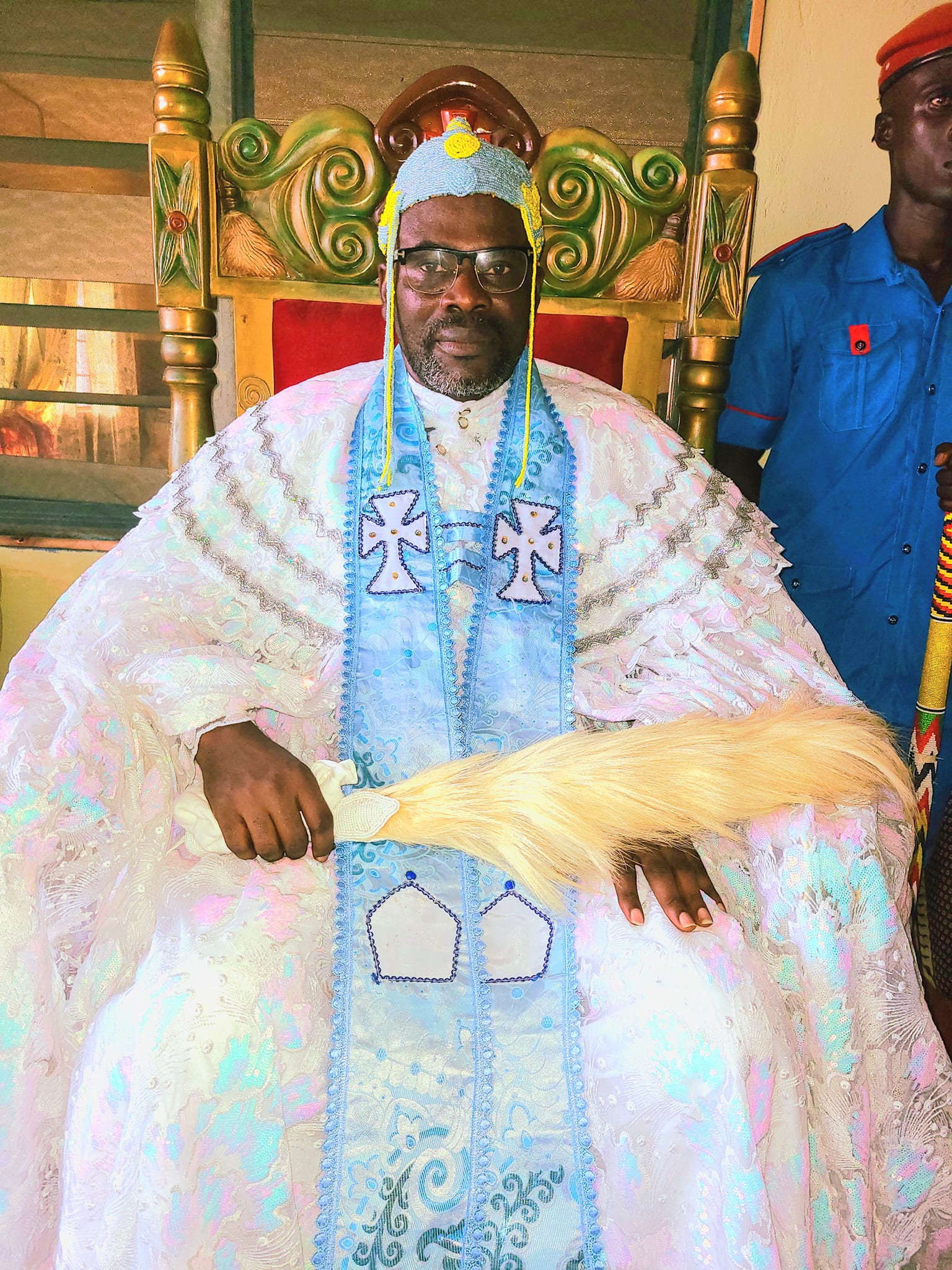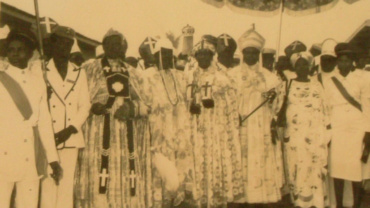In the lineage of spiritual leadership that has guided Ayetoro since its founding, Prophet Oluwambe Ojagbohunmi stands as the current Ogeloyinbo, the “King of the White Robe.” His portrait, often displayed with quiet reverence, is more than an image of a man; it is a symbol of continuity, resilience, and the living faith of the Holy Apostles’ Community.
Oluwambe Ojagbohunmi inherited a tradition deeply rooted in the ideals of Ayetoro’s founders — equality, communal responsibility, and spiritual devotion. His role as Ogeloyinbo is both sacred and civic. He presides not only over worship in the Holy Apostles’ Church but also over matters of daily life, guiding decisions, resolving disputes, and upholding the covenant that binds the people of Ayetoro together.
The portrait itself captures this duality. In archival images, the Prophet is often shown wearing the spotless white garment that has long defined the Apostles, his staff of authority in hand, his gaze steady and dignified. To the community, these symbols are reminders that leadership in Ayetoro is not grounded in wealth or political power but in service, humility, and a commitment to shared values.
Oral testimonies describe Prophet Oluwambe as both a man of prayer and a man of action. Under his leadership, worship continues to be the heartbeat of Ayetoro. Hymns, vigils, and processions remain central to the town’s identity, even as it faces erosion, economic hardship, and the pressures of modern life. He has been described by elders as a bridge between the past and the present — holding fast to the founding vision while guiding the community through contemporary challenges.
His tenure has not been without difficulty. As the sea steadily advances on the coastline, swallowing homes, schools, and gathering places, the Ogeloyinbo has been at the forefront of encouraging resilience. Through sermons and assemblies, he has reminded the Apostles that Ayetoro was built on faith stronger than storms and unity deeper than the tide. His words are said to echo the conviction of the founders: that the community is bound together not merely by geography but by covenant.
The portrait of Prophet Oluwambe also resonates beyond Ayetoro itself. For visitors, it represents the endurance of a community that continues to live by its principles despite external pressures. For scholars and historians, it is a visual link in the chain of spiritual leadership that began with Oba Ethiopia O. Peter. For younger generations, it is a reminder that faith and service remain the true measures of leadership.

Though the challenges of the present are daunting, the portrait of Prophet Oluwambe Ojagbohunmi stands as a testament to continuity. It affirms that the office of the Ogeloyinbo remains a source of identity, strength, and hope for the Apostles of Ayetoro. As one elder put it: “When we see his portrait, we do not only see the man. We see the covenant of Ayetoro, still alive.”




